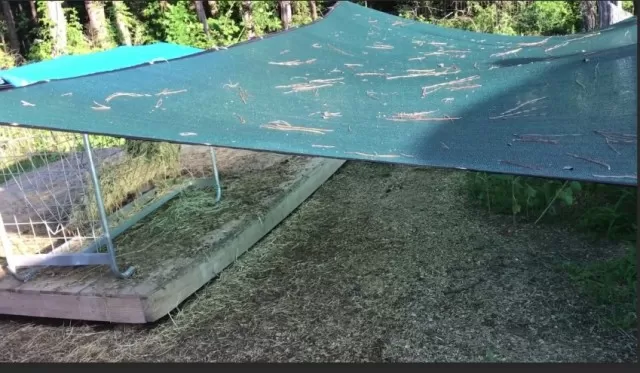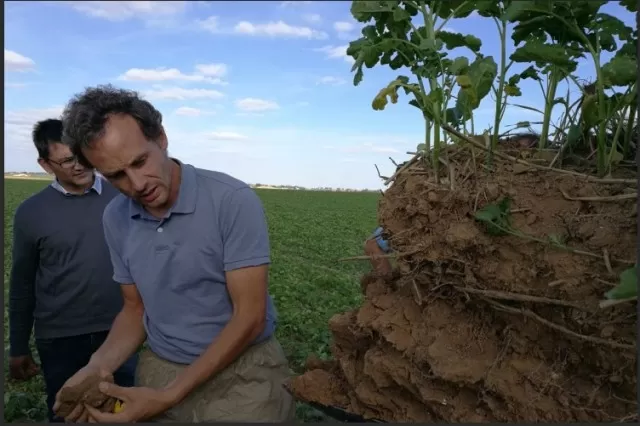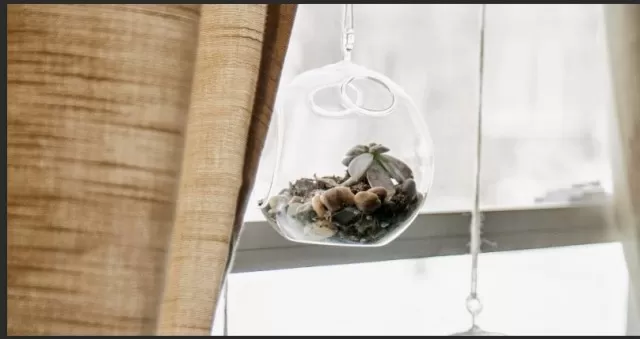12 Plant-Killing Gardening Mistakes to Avoid (Part 1).Gardening, whether you’re a novice or a seasoned pro, can sometimes lead to mistakes. However, by being aware of common gardening pitfalls, you can take steps to avoid them and cultivate a thriving, productive garden. Remember, even seasoned gardeners make mistakes, but they also learn from them. Gardening is a journey of discovery and growth, so don’t be discouraged by occasional setbacks. With patience, knowledge, and a little trial and error, you can nurture a lush and productive garden that brings joy year after year.
The Battle Against Invasive Plants: A Must-Know Gardening Tip

In the world of gardening, the presence of invasive plants can quickly turn your green paradise into a battleground.
Invasive plants are those species that have a penchant for rapid growth and unchecked spread, often originating from different regions or countries and disrupting the local ecosystem. While some of these vigorous plants, such as ivy, can appear visually appealing, they can quickly become a nuisance, competing with other plants for essential resources like water and nutrients.
To maintain a thriving and balanced garden, it’s essential to research the growth habits of any plant before introducing it to your landscape.
Understand its potential for invasiveness and how it might affect the local ecosystem. If you discover that you have invasive plants in your garden, consider replacing them with native alternatives that are better suited to the local environment.
Seek Guidance from local or regional sources, such as master gardeners, extension offices, gardening clubs, and reputable local nurseries.
These resources can provide valuable advice on which plants are suitable for your area and how to combat invasive species effectively.
By taking proactive measures to eliminate invasive plants and replace them with native alternatives, you not only protect the health of your garden but also contribute to the preservation of the local ecosystem.
It’s a win-win situation that ensures a flourishing garden while respecting the delicate balance of the natural world around you.
The Battle Against Invasive Plants: A Must-Know Gardening Tip
In the world of gardening, the presence of invasive plants can quickly turn your green paradise into a battleground.
Invasive plants are those species that have a penchant for rapid growth and unchecked spread, often originating from different regions or countries and disrupting the local ecosystem. While some of these vigorous plants, such as ivy, can appear visually appealing, they can quickly become a nuisance, competing with other plants for essential resources like water and nutrients.
To maintain a thriving and balanced garden, it’s essential to research the growth habits of any plant before introducing it to your landscape.
Understand its potential for invasiveness and how it might affect the local ecosystem. If you discover that you have invasive plants in your garden, consider replacing them with native alternatives that are better suited to the local environment.
Seek guidance from local or regional sources, such as master gardeners, extension offices, gardening clubs, and reputable local nurseries.
These resources can provide valuable advice on which plants are suitable for your area and how to combat invasive species effectively.
By taking proactive measures to eliminate invasive plants and replace them with native alternatives, you not only protect the health of your garden but also contribute to the preservation of the local ecosystem.
It’s a win-win situation that ensures a flourishing garden while respecting the delicate balance of the natural world around you.
Nurturing Your Garden Amid Challenging Soil Conditions

Every dedicated gardener knows that healthy soil is the foundation of a successful garden.
While the science of soil can get intricate, there are some general principles to bear in mind that can help you overcome the challenges posed by less-than-ideal soil conditions.
Know Your Soil: Understanding your soil’s type, pH level, and drainage capabilities is essential.
Different plants have different soil preferences, so knowing your soil can help you select the right plants or amend the soil as needed.
Aeration and Compaction: Roots require access to oxygen, and heavily compacted or clayey soil can restrict their growth and development.
Consider techniques like aeration or incorporating organic matter to improve soil structure.
Drainage Matters: Standing water and overly wet soil can harm most plants.
Proper drainage is crucial, so evaluate your garden’s drainage capabilities and address any issues accordingly.
Boost with Organic Matter: Regularly adding organic matter, such as compost and natural mulches, can enrich your soil by providing essential nutrients and improving its overall health.
Think of it as feeding the soil, which in turn nourishes your plants.
Tailored Soil for Containers: Keep in mind that soil for raised beds and containers may differ from regular ground soil.
Container soil should be well-draining and nutrient-rich to support plant growth in a confined space.
pH Awareness: Soil pH can influence plant health significantly.
Some plants thrive in alkaline soil, while others prefer acidic conditions. Testing your soil’s pH at home can help you make informed choices about which plants to grow.
By taking these steps to care for and improve your soil, you can create a garden that thrives even in challenging soil conditions.
It’s a testament to the art and science of gardening, where understanding and nurturing the very foundation of your garden can lead to flourishing plants and a bountiful harvest.
Give Your Garden Room to Breathe: The Importance of Proper Plant Spacing
Creating a garden that’s full and vibrant from the start is undoubtedly tempting, but when it comes to planting perennials, proper spacing is key to long-term success.
It’s a lesson that every gardener learns, and one that can save you from future regrets.
Here’s why spacing matters:.
Size Matters: When arranging trees, shrubs, and flowers, it’s crucial to consider their mature size.
Crowding your garden with plants that will eventually outgrow their allotted space can lead to numerous complications.
Air and Light: Adequate spacing allows for better air circulation and sunlight exposure.
Poor air circulation can foster conditions for diseases, while reduced sun exposure can hinder plant growth and flowering.
Disease Prevention: Plants that are spaced correctly are less likely to become overcrowded and prone to disease.
Good spacing ensures that each plant has room to thrive without competing excessively with its neighbors.
Vegetable Gardens: In vegetable gardens, precise spacing is essential.
Vegetables can grow rapidly, and crowding can result in stunted growth and decreased yields.
To ensure proper spacing, it’s essential to learn the mature size of your plants, which you can find on seed packets or nursery plant labels.
Resist the urge to overcrowd, and consider filling in gaps with low-growing annuals for added color until your main plants reach maturity.
By giving your garden the space it needs to breathe, you’re setting the stage for a healthier, more beautiful, and more productive outdoor space.
It’s a lesson in patience and planning that ultimately leads to gardening success.
Harvest Regularly for Abundant Edibles

In the world of gardening, timing is everything, especially when it comes to harvesting your precious edibles.
Leaving fruits and vegetables hanging on the plant, waiting for them to grow bigger, can actually hinder the plant’s productivity and overall annual yield. The notion that “bigger is better” doesn’t always hold true, and overripe produce can become tough or bitter.
Here’s why timely harvesting matters:.
Quality Over Quantity: The goal is not just to have more produce but to have the best-tasting, most nutritious, and tender fruits and vegetables.
Picking at the right moment ensures that you enjoy the peak flavor and texture of your edibles.
Plant Productivity: Regular harvesting sends a signal to the plant to continue producing.
If you leave fruits or vegetables on the plant for too long, the plant may slow down or stop production, resulting in a smaller overall yield.
Avoid Waste: Overripe or spoiled produce often goes to waste.
By harvesting at the right time, you can reduce waste and make the most of your garden’s bounty.
Succession Planting: If you’re concerned about running out of fresh produce, consider practicing succession planting.
This involves planting the same vegetable a few weeks after the previous planting. It’s an effective strategy for maintaining a continuous supply of fresh edibles throughout the growing season.
To become a savvy gardener, learn to recognize the signs of ripeness for each type of fruit or vegetable in your garden.
Regularly harvest what’s ready, and savor the taste of homegrown goodness. Your garden will reward you with a bountiful and delicious harvest season after season.
*The information is for reference only.